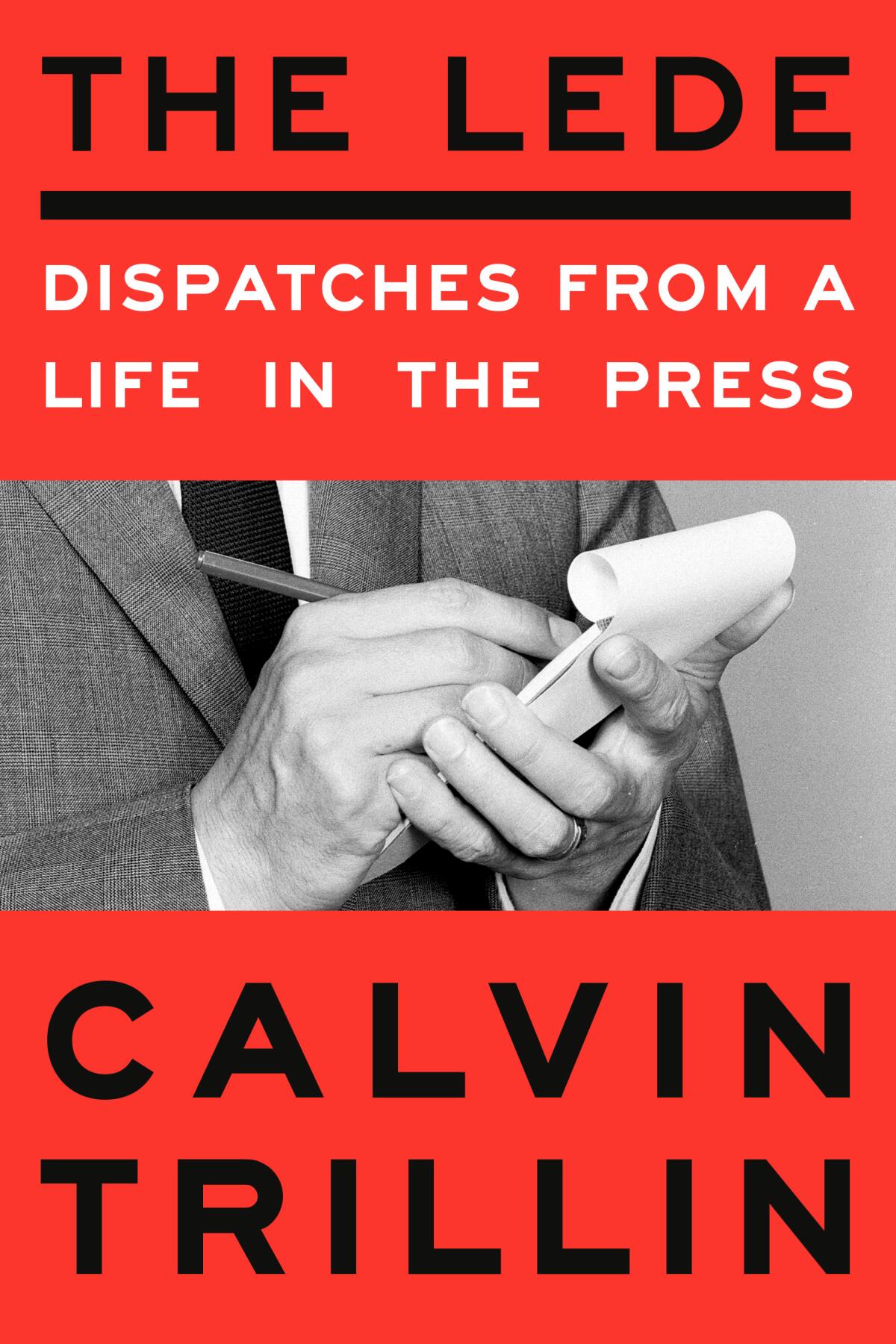Calvin Trillin paints a portrait of a disappearing world of journalism ... without a whiff of sentimentality

- Share via
Book Review
The Lede: Dispatches From a Life in the Press
By Calvin Trillin
Random House: 336 pages, $31
If you buy books linked on our site, The Times may earn a commission from Bookshop.org, whose fees support independent bookstores.
Calvin Trillin’s newest collection, “The Lede: Dispatches From a Life in the Press,” is a reminder that there is no one better working in journalism today — or, as Trillin likes to call it, in “the trade” — than him.
Over the last 60 years, Trillin has written about the civil rights movement, race relations, politics, journalism, murders and food. For 15 years, he wrote a long-form narrative every three weeks for the New Yorker; he’s also written shorter reported pieces, comic sketches and doggerel for the Nation, Time and elsewhere.
“The Lede” collects 42 of these pieces, both humorous and serious. As with Trillin’s previous collections — “Killings,” “Jackson, 1964” and others — the book is focused around a theme; in this case, the news biz. He profiles journalists, examines the evolution of newsrooms, pokes fun at pundits. He revisits the year he spent covering the South for Time magazine and examines the question of journalistic objectivity in the face of evil.
“I didn’t pretend that we were covering a struggle in which all sides — the side that thought, for instance, that all American citizens had the right to vote and the side that thought that people who acted on such a belief should have their houses burned down — had an equally compelling case to make.”
His book reminds us not just of his brilliant plying of the trade but also of what the trade once was.
Trillin is a diligent reporter and a subtle writer, and his prose reads as though it were both effortlessly written and carefully, painstakingly crafted. Often, he drops an oddball detail early into a piece (known as a “gold coin”) and then later mentions the detail again and sometimes again, to humorous effect. His comedic timing is impeccable.

“The Lede” is organized thematically, but individual pieces are not labeled, and so it is only after you get into a comic piece such as “Corrections” or “The 401st” and start chuckling that you begin to realize that nothing in it should be taken seriously. This is not frustrating; it’s a delight.
More serious pieces include homages to departed reporters such as Molly Ivins, Russell Baker and Morley Safer; a retrospective on Trillin’s year covering the Freedom Riders; a profile of Miami Herald cops reporter Edna Buchanan; and an examination of the bizarre time when a mild-mannered film critic for the Dallas Times Herald assumed the persona of a redneck named Joe Bob in order to review trashy slasher movies.
“The Life and Times of Joe Bob Briggs, So Far” is a brilliant piece that weaves themes of newspaper wars, the insular world of Dallas businessmen, the question of honesty and taste in journalism, the fine line between parody and cruelty, and the weird sort of crack-up suffered by the inventor of Joe Bob, a young writer named John Bloom.
L.A. based tech reporter Taylor Lorenz’s ‘Extremely Online’ tackles a worthy subject — the rise of influencers — but reveals nothing worth caring about.
Reading all these pieces together, the reader notices some of Trillin’s habits — not just his use of gold coins and the phrase “the trade” but also his occasional use of anonymous, or, at least, vague sources for some of his best descriptions and observations.
In “The Life and Times,” Trillin points out that the Joe Bob column “presented some special problems. One of them was what people called the Archie Bunker factor — the problem of whether the column is making fun of Joe Bob or of the people Joe Bob makes fun of.”
In “This Story Just Won’t Write,” his recollections of working for Time, he mentions an editor, “a man with an unfortunate shape and a reputation for chasing researchers around his desk, [who] was known, behind his back, as the Horny Avocado.”
And in “Alternatives,” which looks at the evolution of alt-weeklies, two writers who attended a conference looked like “a retired punk rocker and his manager. … For the remainder of the conference, they were referred to as ‘the two gentlemen in costume.’”
These anonymous observations are so apt and witty that the reader could be forgiven for thinking that perhaps the “people” who said these things was actually Trillin himself. He is the man who, after all, once referred to Al Gore as “a man-like object.”
Taken as a whole, “Lede” paints a portrait of a disappearing journalistic world — of newspapers, mostly, but also of magazines. It contains not a whiff of sentimentality; Trillin is too clear-eyed for that. But readers might feel bereft, noting how much has changed in the 60 years since he started writing, how diminished newspapers have become, how robust newspaper wars once were, how many larger-than-life writers have died or moved on. In short, how things used to be in the trade.
Hertzel is a book critic in Minnesota and the author of a memoir, “News to Me.”
More to Read
A cure for the common opinion
Get thought-provoking perspectives with our weekly newsletter.
You may occasionally receive promotional content from the Los Angeles Times.










